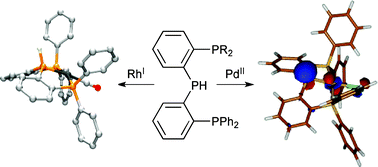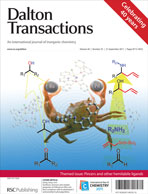The synthesis of a new, all-phosphorus pincer PPNEt2P ligand L3NEt2, which is derived from 2-indolylphosphine and features a central N2P(NEt2) core, is described. This ‘PPP’ species shows coordination toward Rh as a neutral trisphosphine ligand. Tridentate diphenylphosphine-derived PPHP ligands L1H and L2H, featuring a secondary phosphine core, show ‘ambivalent’ coordination, acting as persistent neutral triphosphine ligands with Rh, and as easily-formed monoanionic phosphido(bisphosphine) pincer ligands toward Pd. These subtle differences, which might be more general for group 9 and 10 metal complexes with this ligand set, are explained by comparative DFT calculations (BP86; def2-TZVP level of theory) for the Rh and Pd species involved, including those with the structurally related PNHP ligands. The optimized structure for complex PdCl(L2) indicates minimal overlap of available Pd d-orbitals with the lone pair of the central, deprotonated phosphorus atom (formally a phosphido fragment), suggesting that it behaves predominantly like a bulky phosphine instead of a phosphido fragment.

You have access to this article
 Please wait while we load your content...
Something went wrong. Try again?
Please wait while we load your content...
Something went wrong. Try again?


 Please wait while we load your content...
Please wait while we load your content...